Fall is prime planting time in Southern California. The well organized among us are rumored to plan all year long so that they're ready to spring into action the instant the hot weather subsides (usually by mid-October). The shorter days, cooler nights and low-angle sun of autumn add up to reduced water stress on new plants, while the still-warm soil allows roots to flourish.
Prime planting season continues through January or so, when much-welcome rains (fingers crossed) give young plants an additional leg up. Keep an eye out for hot, dry Santa Ana winds early in the season, however, and be prepared to apply additional irrigation to garden newcomers to prevent them from turning into shoe leather.
See a sampling of fall planting selections below.
Note: Since bare-root season is coming with the new year, you can get a good healthy start for these varieties
and save money by waiting to plant when they come on the market in early winter. Look for bare-root deciduous fruit trees, berries and roses in a wide selection of varieties come January and February.
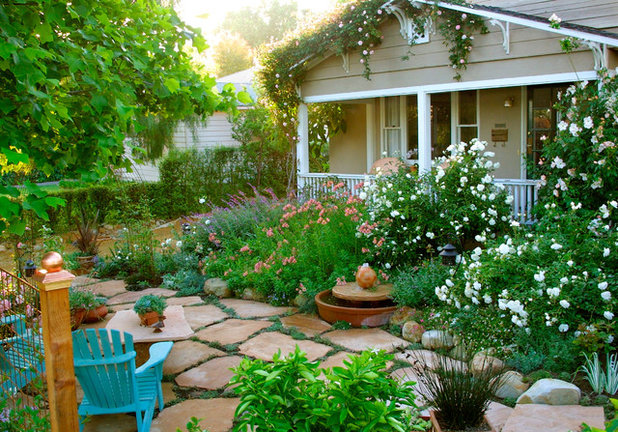
Margie Grace - Grace Design Associates
Plant trees, shrubs and ground covers. With the exception of warm-season growers, pretty much everything benefits from the favorable conditions of fall planting. (It's best to wait to plant warm-season growers until, well, the warm season. Warm-season growers include tropicals, subtropicals, some flowers and summer veggies.)
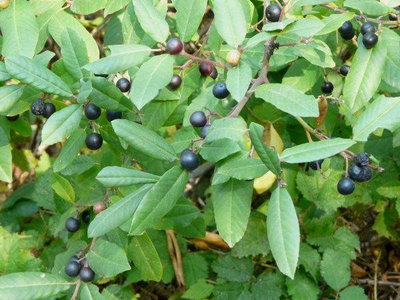
Las Pilitas Nursery
Plant California natives. Native California and Mediterranean plants are especially grateful for fall planting, as they're uniquely adapted to the rhythm of Southern California seasons. If you plant them now, you won't see much action above ground for a few months, but by spring you'll see dramatic evidence of autumn-through-winter subterranean growth, with an abundance of healthy new foliage supported by well-established roots.
Coffeeberry (Rhamnus californica) makes a great medium- to large-scale billowy ground cover, understory plant or informal screen. It's an important food plant for native fauna, has attractive berries, is drought tolerant and is fairly bulletproof. Like most Mediterranean-adapted plants, it wants good drainage and deep, infrequent watering.
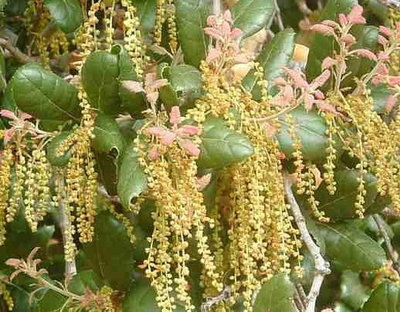
Las Pilitas Nursery
Silk tassel (
Garrya elliptica varieties) is a showy, somewhat narrow shrub. Try it for an informal screen or a "hedge" with a punch. Look for named varieties for the showiest inflorescence.
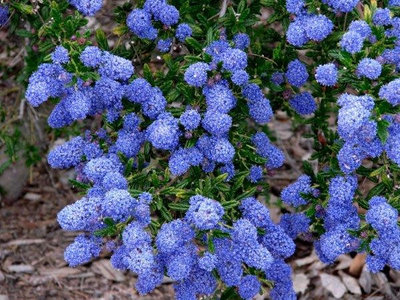
Las Pilitas Nursery
Looking for a California native showstopper? Try
Mountain Lilac (
Ceanothus varieties)
in a range of colors — from white through deep blue — and sizes — from ground cover to small tree. It puts on a show just as most gardens are at their dreariest, in late winter to early spring. This one's a low ground cover variety.
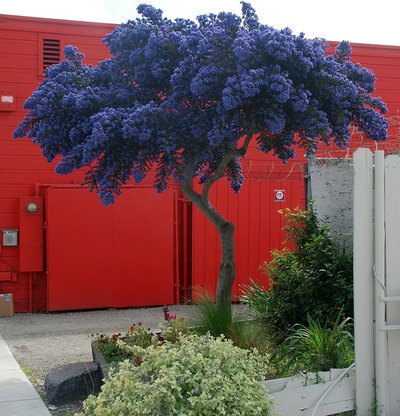
Pete Veilleux, East Bay Wilds
Mountain Lilac is uberversatile. From subtle and sublime to loud and attention stealing, Mountain Lilac does it all. This Ceanothus was given a custom haircut and a splashy backdrop — talk about drama!
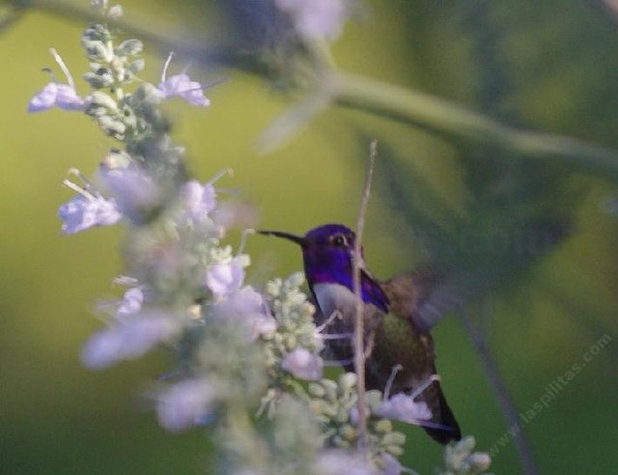
Las Pilitas Nursery
Sages are fast growing, showy and attractive to wildlife. What more do you want in a plant?
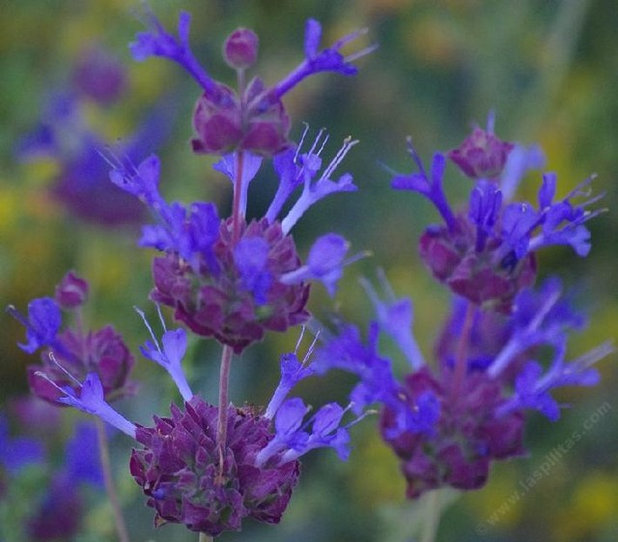
Las Pilitas Nursery
Look for many species and varieties of sage, from ground cover to large shrub, and flowers in a wide range of colors.
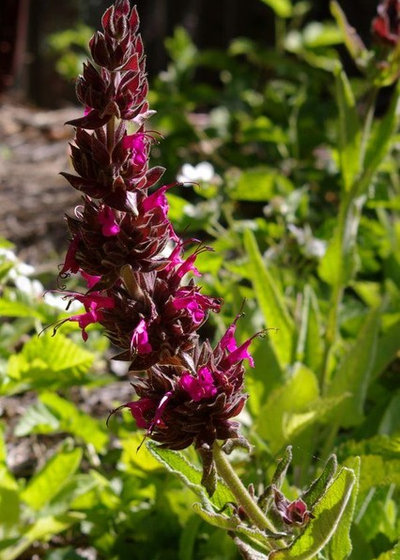
Las Pilitas Nursery
There are even a few sages that can take dry shade, like this
hummingbird sage (Salvia spathacea).
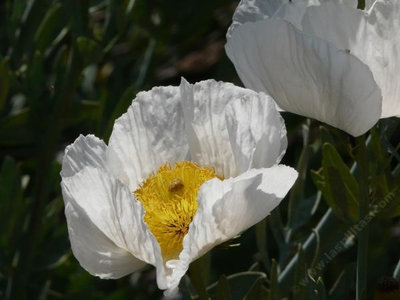
Las Pilitas Nursery
Matilija poppy (Romneya coulteri) is a fantastic and otherworldly native for gardens with some elbow room.
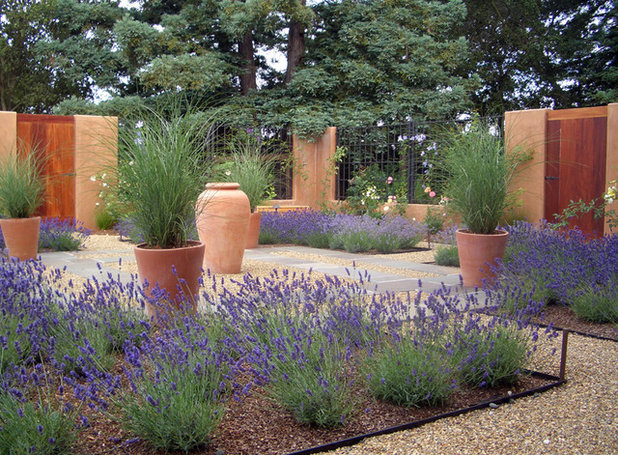
Zeterre Landscape Architecture
Plant Mediterranean natives. Fall weather provides the perfect planting conditions for plants from other Mediterranean climate regions, too. Many plants of Australian, South African and Mediterranean origin will benefit from fall planting. Look for lavenders, sages,
aloes, agaves and
Dianellas, among hundreds of other candidates, for October planting.
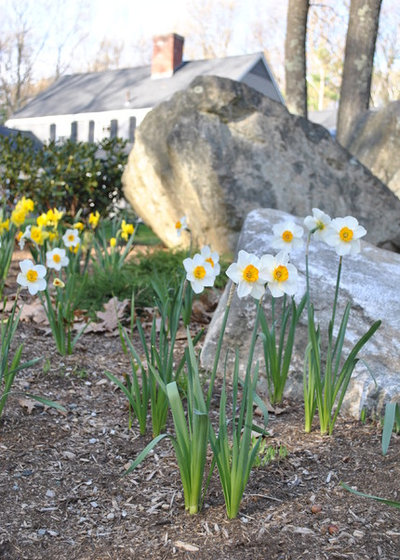
Timothy Sheehan, ASLA
Plant spring-blooming bulbs. Put spring-flowering bulbs in the ground as soon as possible to bring a hint of seasonality (which can be all too vague in our region) and color in early spring.
Check your local nursery for good choices for your area. Bulb catalogs are a fine source for spring-flowering bulbs as well, but it's a little late in the season, so supplies may be low and speedy shipping may be required to get bulbs before they begin to sprout.
The list of fall-planted bulbs is long. It includes
daffodil (shown),
narcissus, anemone, calla, Crinum, tulip, dahlia and
freesia.
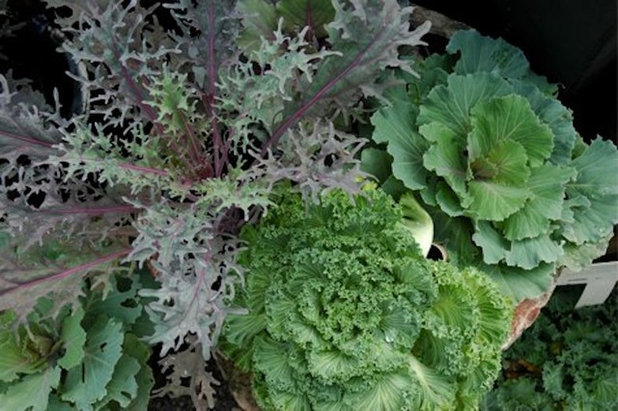
J. Peterson Garden Design
Plant cool-season vegetables. Cool-season veggies can be sown from seed or set out as small plants once the danger of searing heat has passed. If you're well disciplined, repeat sowing of fast-growing varieties — such as radishes, carrots, lettuces, cilantro and salad greens — every couple of weeks will keep you in fresh, tender produce throughout fall and winter.
Most
leaf crops (lettuce, mesclun mix, arugula) go in the ground this month and can be sown every couple of weeks for continual harvesting through the cool season.
See more salad greens to plant this month
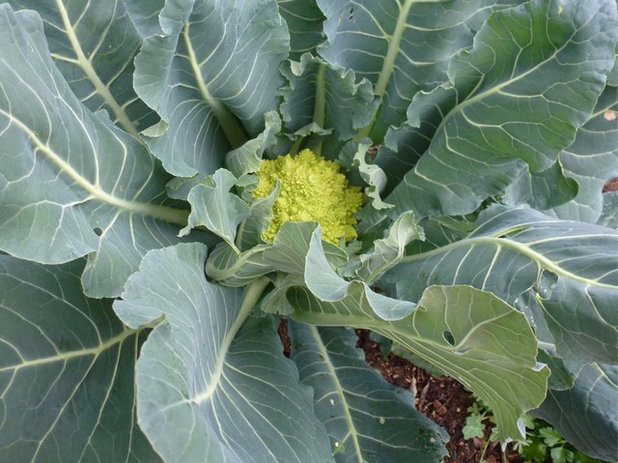
J. Peterson Garden Design
Crucifers, or members of the cabbage family, are planted as soon as the days cool off. Look for broccoli, cabbage, cauliflower, Brussels sprouts, bok choy and others.
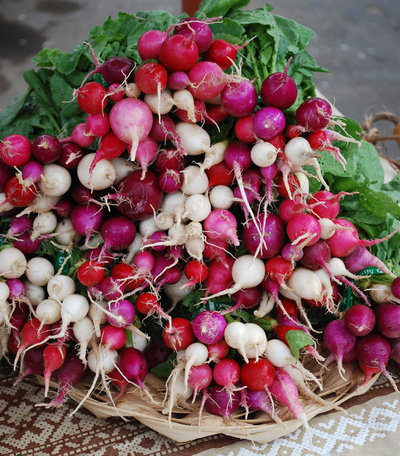
Jocelyn H. Chilvers
Plant root crops. Most root crops — radishes, carrots, beets — are planted this month and throughout fall.
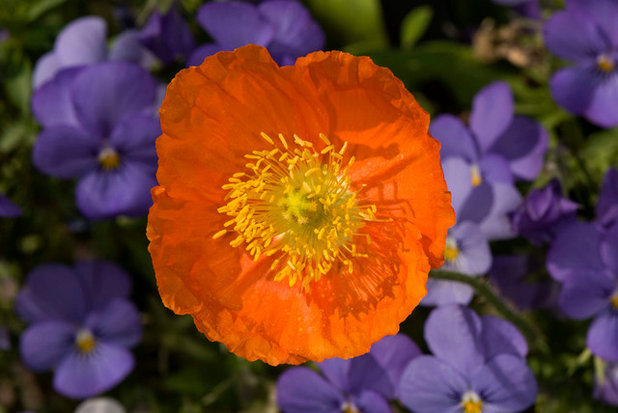
The New York Botanical Garden
Plant cool-season flowers. Sow cool-season flowers (and ornamental foliage plants, such as flowering kale) from seed now or set them out as small plants through late fall. Early fall planting can bring flowers in time for the holidays; later plantings can last through spring.
Iceland poppy (shown) is a classic. Plant it now in masses for a lively cool-season display.
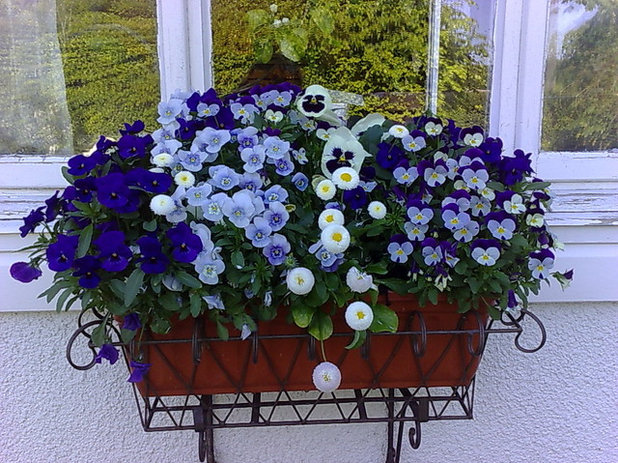
Beertje Vonk Artist
This window box spilleth over with
pansies and Johnny-jump-ups (Viola). White English daisies provide a splash in the middle of the planting.
Tip: Try some Johnny-jump-up blooms in your salad for color, flavor and a conversation starter.
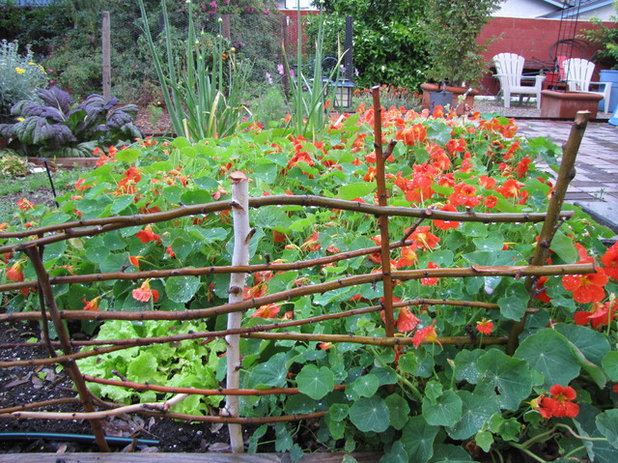
Jean Marsh Design
Sow seeds of
nasturtium for a beautiful carpet of color; harvest flowers and tender seed pods for a spicy addition to salads.
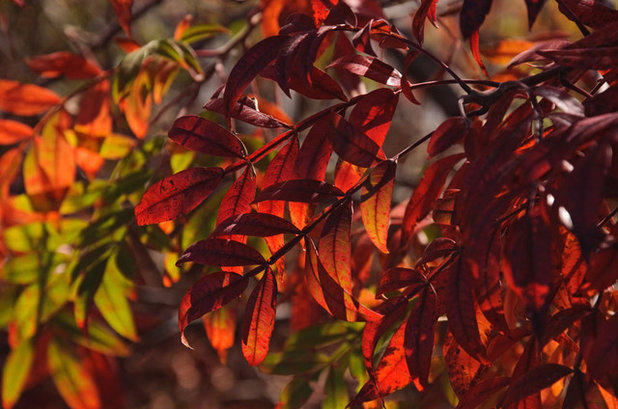
Barbara Pintozzi
Shop for fall foliage trees while they're in color. If you hunger for colorful fall foliage in your garden, now is the time to get out and meet your options face to face. I'm a firm believer in dating before marriage; likewise, I believe strongly in selecting trees in person before committing to a lifetime together. Varieties vary (I guess that's a given), and they respond differently to different microclimates, so it's prudent to study
actual trees in your
actual neighborhood so you get what you
actually want.
Pistachio (shown) puts on a vibrant — if brief — color show in our mild Southern California autumn weather.
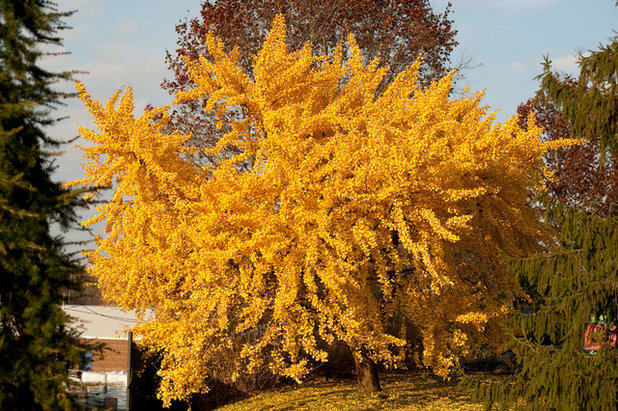
The New York Botanical Garden
Gingko (shown),
liquidambar and crape myrtle are a few trees that put on a show for would-be leaf peepers. Don't don't expect a Vermont-scale spectacle, and figure on your fall color arriving closer to Christmas, and you won't be disappointed. This is Southern California, after all.
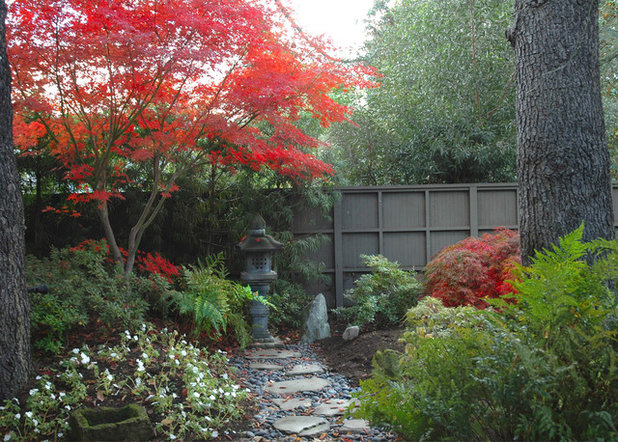
Richard Kramer
Some varieties of Japanese maple can be disappointing in our mild climate, with their leaves simply turning brown and crunchy and clinging to the tree until spring growth pushes them off. For great fall color in your garden, shop for Japanese maples cloaked in fall color.
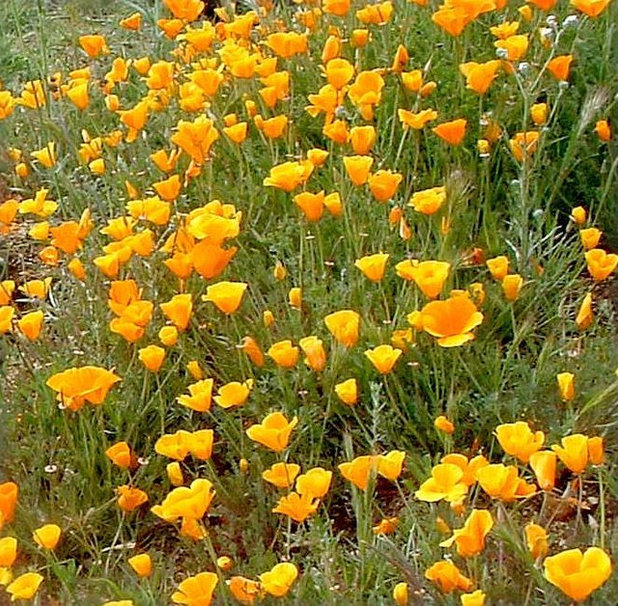
Las Pilitas Nursery
Look for wildflower seeds. It's worth picking up wildflower seeds toward the end of this month — you'll have fresh seeds to select from and be ready to sow them as soon as the rains come, be it the beginning of November or not until the turn of the year. (Depending on who your trick-or-treaters are, consider giving out wildflower seeds — adults who accompany little ghouls especially appreciate the thought.)
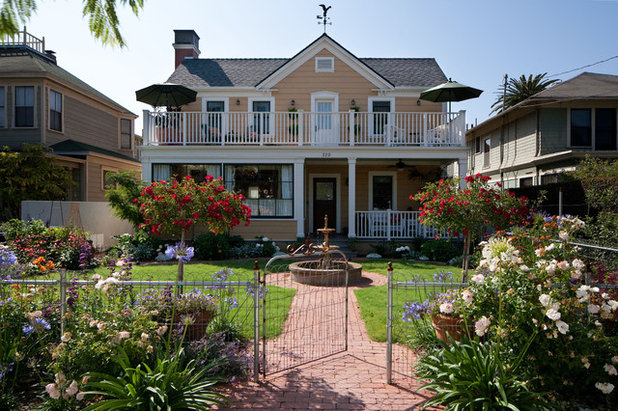
Margie Grace - Grace Design Associates
Plant or repair cool-season lawns. Cool-season lawns can be seeded now or put in as sod. Look for low-water and low-mow varieties for our drought-challenged climate.
More tips for fall lawn care
More guides to California gardening | Find your U.S. garden checklist





